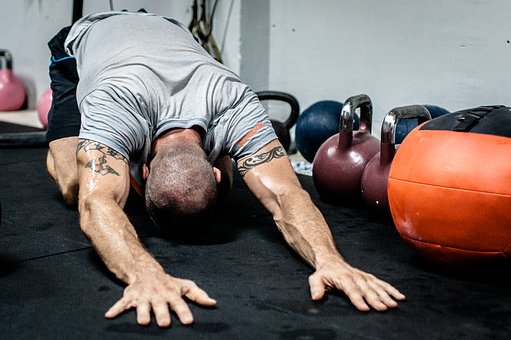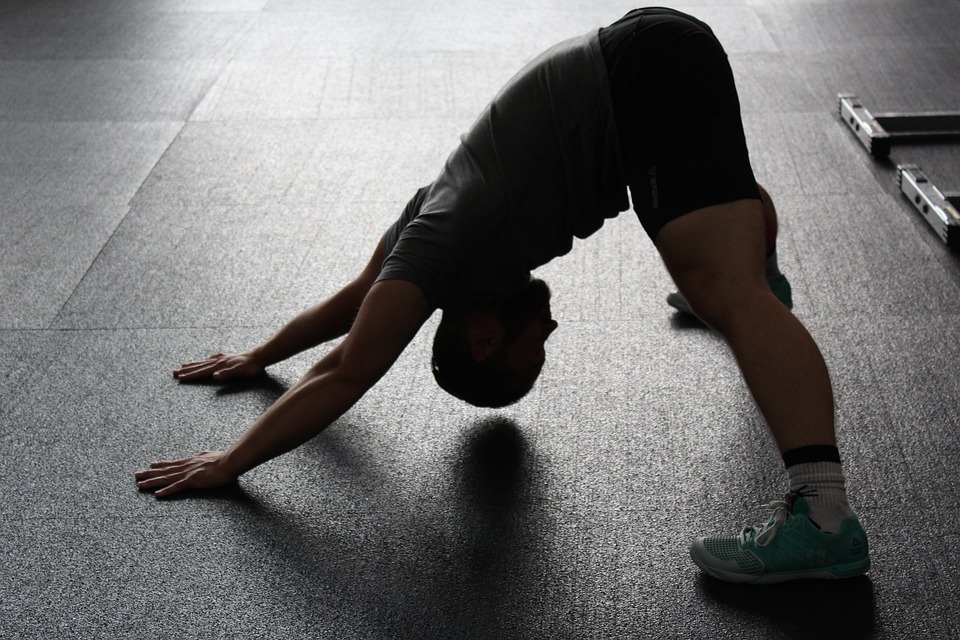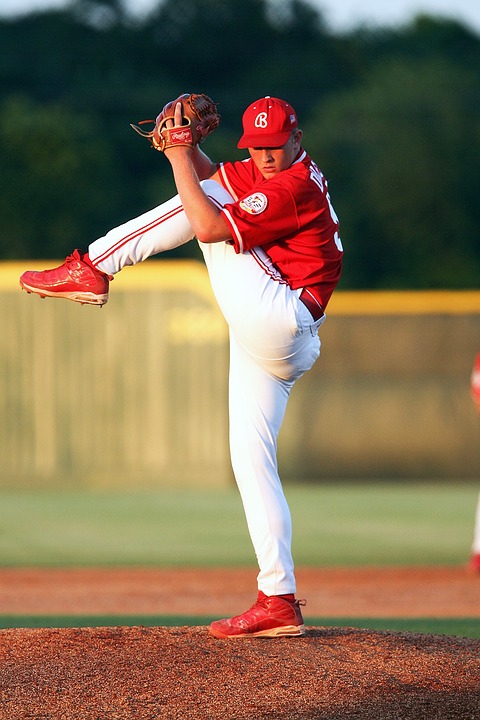
A very common question: ‘stretching, good or bad?’. The problem with that question is that it is not specific enough, you will have to narrow it down. It all depends on the type of stretching and the moment you stretch. To make it simple there are two types of stretching: dynamic stretching and static stretching. In this section we will talk about static stretching, often referred to as passive stretching.
Static stretching.
Lengthening a muscle and holding that position for x amount of time is called static stretching. You move in a certain direction until you feel a good stretch in the muscle you are targeting. They also call this passive stretching because when you approach that end range you hold still which in contrary with dynamic stretching.
More mobility [1,2,3,4,5,6,7]:
Gaining more mobility is one of the main effects of static stretching, the body adapts to the stimulus you give it. The amount of effect depends on the intensity of the stretch, research done by Freitas [6] showed that stretching at 50% or 75% of your max is not enough to gain more flexibility. The only way test subject increased their mobility was by stretching at 100% of their range. They did not find a difference between stretching for 90, 135 or 180 seconds.
The optimal durance of a stretch remains debatable, there are various opinions. But most studies end up with 30-60seconds a day. You can choose 1x30sec, 2x30sec, 2x15sec or 6x10sec there was no difference found [3,4,5,7], all those protocols gave a increase in muscle length after 6 weeks. Eccentric training is besides static stretching also an effective way to increase muscle length. The amount of research done is still small, but researches who compared static stretching with eccentric training showed eccentric training as the winner [8,9,10]. Test subject in a research of Mandeep Thour [9] were spit in two groups. Group one performed a eccentric exercise for 6 reps of 5 seconds, whereas the second group performed a static stretch of 30 sec. Directly after the exercise the eccentric group had a gain of 9.48 degrees whereas the static group had a gain of 5.05 degrees. The same protocol was used by Nelson [10] over a course of 6 weeks, afterwards the eccentric group had a gain of 12.79 degrees whereas the static group had a gain of 12.05 degrees.
To gain mobility holding a stretch for 30-60sec turns out to be the most effective. And it doesn't matter if you hold it for 1x30sec, 2x30sec, 2x15sec or 6x10sec, it all seems to be similarly effective.

Performance.
There has been done a lot of research on the effect of static stretching before a match or training. They all draw the same conclusion: static stretching has a negative effect on performance [11,12,13,14,15,16,17,18,19,20]. It doesn’t matter which type of training you choose, they have tested it before strength, jumping and sprint training. Most of the researchers say the static stretches result in a loose of tension in the muscle negatively impacting the performance. When the muscle is to ‘loose’ due of stretching it cannot contract as effectively resulting in a lowered power output.
The idea that the tension comes back within minutes is not supported. Research done by Viale [12] showed that after stretching the power output declined with 8%. After some active recovery on a bike the strength declined even more with 1.3% and Dias [21] showed that even after 30min there is no full recovery. The strength output was significantly better after 30min compared to 15min, but still not good enough.

After training.
Even though static stretching is not recommend before a match or training it does have positive effects after training. After a heavy training it is an useful way to decrease muscle stiffness, and its effectiveness has been shown in research. Torres [22] showed that static stretching is beneficial after a heavy eccentric training by comparing a non stretching group with a onetime stretching and a daily stretching group. Days after training the groups who stretched were more flexible and felt better, with daily stretching producing the best results. A different study [23] looking at rats compared static stretching with no stretching after a exhausting training. The next day they looked at the muscle fibers concluding that the fibers of the non stretching group were still in contraction, whereas the stretching group fibers were more relaxed.
concluding
There is no good or bad, it depends on the type of stretching and the moment you perform the stretch. If you are trying to improve performance right before a game: don’t do static stretches, it will lower the tension inside the muscles resulting in a decreased ability to contract effectively. Performing static stretches after a match/training is an option to improve flexibility the next day. If you want to increase your range and feel more flexible, static stretching is a way to go. Do 30-60sec stretches daily for the muscle you’re targeting, after 6 weeks you should be able to experience significant improvement. But use it or lose it: you will have to do these stretches regularly to not lose the range.
References:
- The effect of warm-up, static stretching and dynamic stretching on hamstring flexibility in previously injured subjects
- Determining the minimal number of cyclic passive stretch repetitions recommended for an acute increase in an indirect measure of hamstring length
- A Comparison of Two Stretching Protocols on Hip Range of Motion: Implications for Total Daily Stretch Duration.
- The Effects of Static Stretch Duration on the Flexibility of Hamstring Muscles
- Effect of Stretch Duration on Hamstring Flexibility.
- Responses to static stretching are dependent on stretch intensity and duration
- A comparison of the effects of stretch duration and repetitions on hamstring extensibility
- Comparison of the Duration of Maintained Calf Muscle Flexibility After Static Stretching, Eccentric Training on Stable Surface, and Eccentric Training on Unstable Surfaces in Young Adults With Calf Muscle Tightness
- A Comparison of the Immediate Effects of Eccentric Training vs Static Stretch on Hamstring Flexibility in Basketball Players
- Eccentric Training and Static Stretching Improve Hamstring Flexibility of High School Males
- Passive stretching effects on electromechanical delay and time course of recovery in human skeletal muscle: new insights from an electromyographic and mechanomyographic combined approach
- EFFECT OF ACTIVE RECOVERY ON ACUTE STRENGTH DEFICITS INDUCED BY PASSIVE STRETCHING.
- Acute muscle stretching inhibits muscle strength endurance performance.
- Acute Effects of Static and Proprioceptive Neuromuscular Facilitation Stretching on Muscle Strength and Power Output
- Acute effect of static and dynamic stretching exercise on sprint and flexibility of amateur soccer players
- The Effect of Static Stretching on Phases of Sprint Performance in Elite Soccer Players
- Acute Effects of Static versus Dynamic Stretching on Isometric Peak Torque, Electromyography, and Mechanomyography of the Biceps Femoris Muscle
- Acute Effects of Static, Dynamic, and Proprioceptive Neuromuscular Facilitation Stretching on Muscle Power in Women
- The Acute Effects of Dynamic and Ballistic Stretching on Vertical Jump Height, Force, and Power
- The Acute Effects of a Warm-Up Including Static or Dynamic Stretching on Countermovement Jump Height, Reaction Time, and Flexibility
- Number of repetition after different rest intervals between static stretching and resistance training
- Effect of single bout versus repeated bouts of stretching on muscle recovery following eccentric exercise
- THE EFFECTS OF STATIC STRETCHING AFTER STRENUOUS TRAINING ON ULTRASTRUCTURE AND FLEXIBILITY OF RATS' GASTROCNEMIUS
